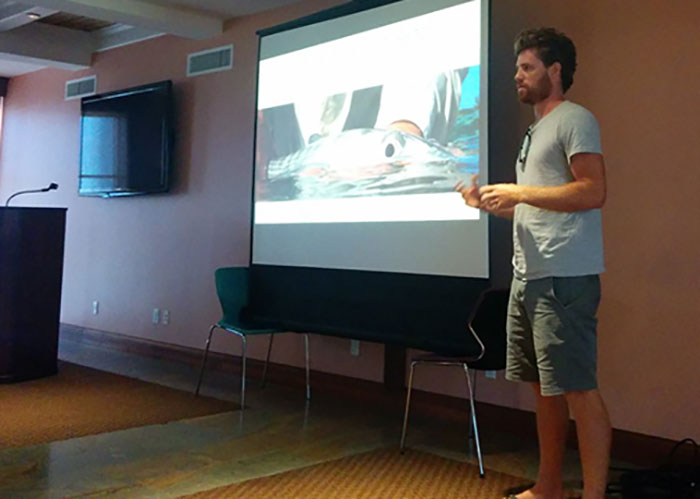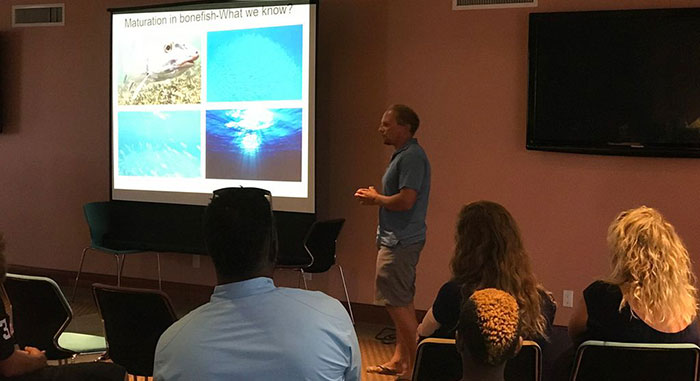If you missed the first part of our interview with Travis posted yesterday, read it here.
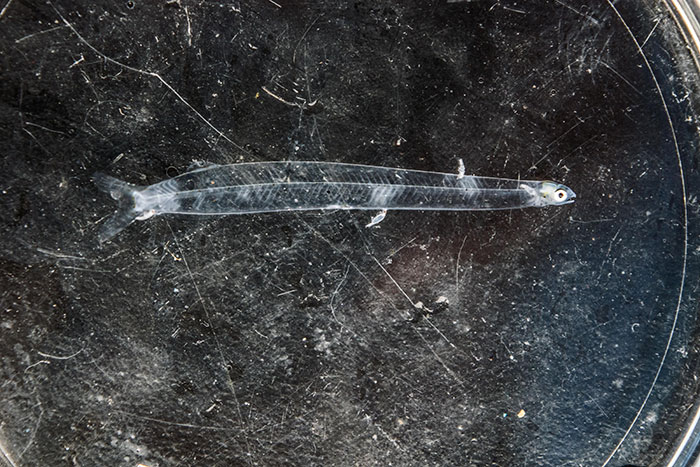
A “bonefish before it’s a bonefish”- a leptocephalus larvae caught in a light trap
Please tell us a bit about the Cape Eleuthera Institute and what in particular enticed you to join the research team?
The Cape Eleuthera Institute is supported by the US based non-profit ‘Cape Eleuthera Foundation’ and operates under the premise that students should be producers of knowledge, not just consumers. Students at our sister organizations ‘The Island School’ and ‘Deep Creek Middle School’ work alongside scientists and engineers at the Cape Eleuthera Institute (CEI) and Center for Sustainable Development (CSD) to develop in-house research initiatives that address a variety of local, regional, and global marine conservation issues. The fundamental CEI research philosophy integrates education and outreach with science, facilitating student access to hands-on, conservation-oriented research.
I had spent some time working in The Bahamas after my undergraduate and as a dive instructor in Bonaire after my MSc so I was well versed on island living. Part of being a fish biologist is that you can travel and live in different places and after spending four years in Scotland, although beautiful and some great fishing, I was ready for some island living and sunshine again which brought me to the institute
CEI has partnered in some very interesting bonefish (and other) research there over the years; what’s the latest on your bonefish reproduction study?
The bonefish reproduction study is currently in its fifth month. The fish are healthy and we are continuing our weekly blood sampling protocol. We have sent over 150 samples to our collaborators (Bonefish and Tarpon Trust, Florida Atlantic University and Florida Institute of Technology) for hormonal profiling with the results likely to be published in a year or so-stay tuned for updates. In addition to this work we have just finished year two of a three year study led by Georgie Burruss, an MSc graduate student at Michigan State University, USA, looking at bonefish movements (telemetry) in relation to predators and to help identify spawning aggregation sites on Eleuthera. We are busy collecting and downloading these receivers and are in the early stages of analyses. Early results suggest some interesting movements of predators in relation to these aggregations and potentially five newly discovered bonefish spawning sites on Eleuthera alone.
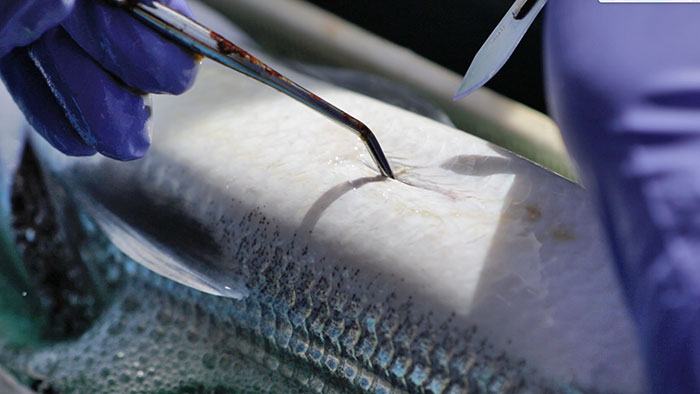
An anesthetized bonefish undergoing a standard internal acoustic tag implantation prior to being safely released
Considering that bonefish play an enormous economic role in the Bahamas (and many of the regional/island economies), how receptive and cooperative have local Bahamian authorities been to input from CEI on bonefish related issues?
The local Bahamian authorities have been receptive to input from everyone (researchers, guides and lodge owners) including CEI- which is great. That being said I do believe there is still some work that needs to be done to further clarify some of the new bonefishing regulations and to ensure the stability of the industry. After attending the recent Bahamas Bonefish Conference, hosted by the Fisheries Conservation Foundation (FCF), which brought together researchers, guides, lodge owners, Ministry of Tourism and local government it seems that everyone understands the importance of the industry and are devoted to conserving it-which is extremely important to the economy.
What’s topics / areas of interest are next up for your team related to bonefish and the flats ecosystem?
A big part of attending the recent Bahamas Bonefish Conference was to identify some of the pertinent gaps in bonefish research. After discussing with other researchers, guides and lodge owners the consensus seems to be that further work is urgently required on the movements of juvenile bonefish (“the lost years”) and further identification of spawning aggregation sites on other islands so that they can perhaps be protected in the future. Additional work on best handling practices and possible ways of dealing with shark predation following release were also highlighted. With only about a years’ worth of funding left on our telemetry study, we will be working hard over the next few months to form collaborations in hopes of securing funding to address these issues.
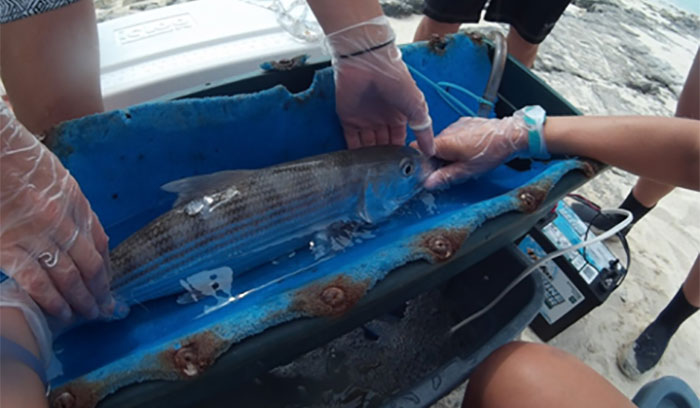
An anesthetized bonefish being prepped for tagging prior to release
How can an interested fly fisher help CEI accomplish their research and educational missions?
Apart from donations and “in-kind support” direct to the research program, interested fly-fishers can help us by spreading the word about the conservation-minded work we are doing at the institute and by assisting physically by lending a hand. For example we rely heavily on interns, students and the public to help capture fish for our various projects during certain times of the year. Additionally, we are always interested in talking with fly-fishers about their local experiences and any observations and opinions they may have. So if you ever find yourself on Eleuthera feel free to stop by the institute and I will be happy to talk bonefish with you and give you a tour of our wet lab.
If you had to choose just one fly to recommend for fly fishing the Bahamas, what would it be?
Unfortunately I can’t comment on the other islands – On Eleuthera, where I tend to be lazy about changing my fly – I have had pretty good luck with #6 or #8 gotchas. For me anything tan/brownish colored with rubber legs works well.
If you could encourage fly fishers to do just one thing in terms of stewardship this next year, what would that be?
Get involved within your local communities, sponsor a children’s fishing day and help educate the youth about fly-fishing and the possibilities associated with fly-fishing (travel, research scientist jobs, guiding, lodge owner etc.). For example it was identified at the Bahamas Bonefish Conference that there is a severe lack of young guides in the bonefish industry, so much that there is a push for bone fishing to become part of school curriculum- now that’s great idea for securing the industry for the future but why should that only be in the Bahamas.
Many thanks to Travis for the taking the time out of his busy schedule (and from dodging storms) to scribble out our interview and round up some pics.
Cheers.
Images following: Bonefish researchers from the Cape Eleuthera Institute (Georgie Burruss, Eric Schneider and Travis Van Leeuwen) presenting at the recent Bahamas Bonefish Conference on Grand Bahama.

